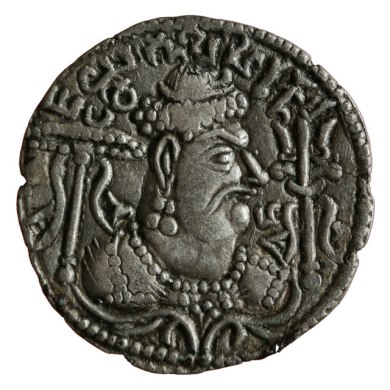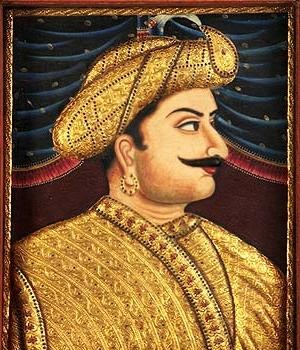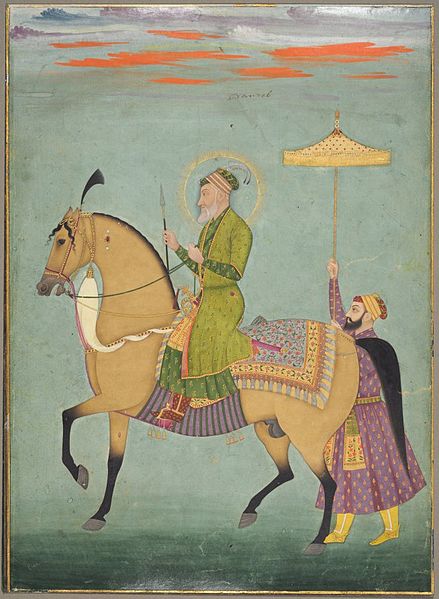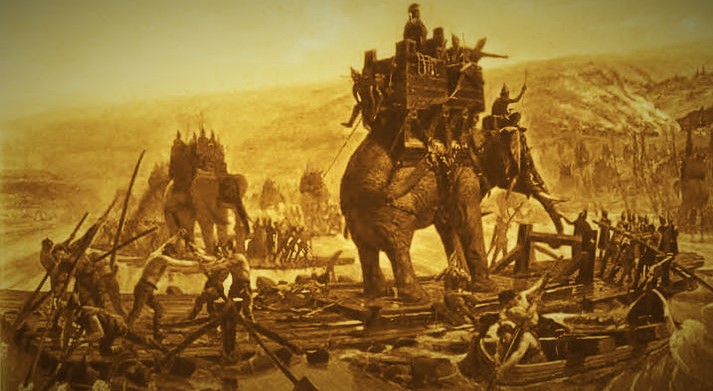Firuz Shah Tughlaq

As the head of the Tughlaq dynasty, Firuz Shah Tughlaq ruled over the Sultanate of Delhi for 37 years from 1351 to 1388. The Sultan was a religious fanatic and imposed his Islamic beliefs on non-Muslims who were labelled infidels under his rule. He reinstated the rigorous religious tax called Jizya that made it mandatory for non-Muslims to pay a yearly tariff or risk prosecution.
Slavery was commonplace during his reign and even prevailed upon his death. So when the Sultan died, slaves under his service were systematically executed and piled on one large heap.
He led expeditions to the length and breadth of India and destroyed ancient Hindu temples, shrines and monuments. The Tarikh-i-Firuz Shah, a historical record of his rule, tells us of such an expedition to the state of Odisha in 1360. On an island, not far off the coast, nearly a 100,000 men had taken refuge with their wives and children. The Sultan’s men turned the island red with blood and took the women and children as slaves.
Pushyamitra Shunga

Originally an army general, Pushyamitra usurped the throne by assassinating the last Mauryan king Brihadratha Maurya in 185 BCE. Pushyamitra was a staunch Brahmin and employed a cruel policy of exterminating the Buddhists along with their holy sites, structures and scriptures.
One of the earliest records of his deep rooted hatred for Buddhism is in the Ashokavardana which suggests that Pushyamitra tried to destroy the Kukkutarama monastery in Pataliputra but the site was saved miraculously. He then proceeded to Sialkot where he offered a prize of 100 dinaras or gold coins for the head of every Buddhist monk brought to him.
The 2nd century Buddhist text Vibhasa reports that Pushyamitra killed Buddhist monks, burned scriptures and destroyed 500 monasteries in the Kashmir region. According to Taranatha, a 16th century Tibetan Buddhist historian, Pushyamitra and his allies more or less obliterated the Buddhist doctrine in Northern India within five years.
Mihirakula

King Mihirakula belonged to the Hepthalite Empire which at one point ruled over Northern India as well as part of China, Pakistan, Afghanistan, Turkmenistan and many other countries in and around Central Asia.
Mihirakula was one of only two Huna kings of India with his father Toramana being the other one. According to the Alexandrian traveller Cosmas Indicopleustes, the Indian Hepthalites reached the pinnacle of their power under Mihirakula’s kingship.
He was noted to be a patron of Shaivism – a devotee of the Hindu god Shiva. According to the Chinese traveller Hsuan-tsang, after a defeat at the hands of an alliance between the Aulikara and Gupta dynasties in the year 528, Mihirakula was taken prisoner. But shortly after his release, he set of to Kashmir where the king received him in honour and dignity. A few years later, Mihirakula instigated a revolt against the king of Kashmir subsequently usurping the throne and destroying Buddhist shrines & monasteries.
Buddhist records of that era describe him as “as a terrible persecutor of their religion”.
Alauddin Khilji

Considered to be one of the most influential rulers in Indian history, Alauddin ruled over the Sultanate of Delhi from 1296 to 1316. He was the second ruler from the powerful Khilji dynasty and helped expand his dominion all across Northern India as well as parts of present day Pakistan and Afghanistan with his keen military mind.
Alauddin was one among only a handful of kings who repeatedly and successfully resisted Mongol invasions in the north. As a result of these Mongol invasions, several of the soldiers and retainers of the invading army settled in and around Delhi and converted to Islam. Alauddin branded them as ‘New Muslims’ and ruled over them with an iron fist.
Alauddin saw these people as a threat to his supremacy, fearing a rebellion that could lead to a revolution. To avoid that, he ordered his men to slaughter each and every one of them. So in 1298, around 15000 to 30000 men were massacred on a single day with the women and children taken as slaves.
Ashoka

Emperor Ashoka is widely considered to be the greatest of all kings who ruled over India and is one of the principal reasons why Buddhism spread across the length and breadth of the country.
He belonged to the Maurya dynasty and was renowned for being an unforgiving ruler hell bent on conquering the entire Indian subcontinent with his military might. It was during the war with the Kalinga Empire in 260 BC that resulted in the death of more than 200,000 people when Ashoka embraced Buddhism as the sight of so much bloodshed helped him realize what he has done.
The Ashokavadana, an ancient text that describes Ashoka’s life details a torture chamber that was created at his behest. The chamber itself was a palace designed beautifully with jewels, flowers and trees but beneath its splendour lay the cruel and sadistic means for torture. It is reportedly inspired from the five stages of torture of the Buddhist hell.
Raghoji I Bhonsle
A Maratha general and ruler of the Nagpur Kingdom, Raghoji reigned from the 1740s to 1753. Under his command, the Marathas launched a series of attacks towards Bengal, in Eastern India, for the sole purpose of looting and pillaging.
For a decade that they plundered Bengal, it caused catastrophic effects on its population that subsequently triggered an economic depression. The Marathas were experts in guerrilla warfare and they used it to its fullest to uproot villages and cities, and slaughtered ordinary civilians almost nonchalantly.
Described as an opportunist, Raghoji’s Maratha Kingdom forced the Nawab of Bengal to relinquish his authority over the state of Odisha. The historian PJ Marshal writes that the Marathas killed over 400,000 Bengalis and a great many merchants “were permanently crippled by losses and extractions”.
So frequent and brutal were these raids that it gave rise to lullabies and poems. One such poem reads as follows,
“When the children fall asleep, silence sets in, the Bargis come to our lands
Bulbulis (birds) have eaten the grains, how shall I pay the rent?”
Tipu Sultan

Tipu Sultan was the son of Hyder Ali of Mysore and succeeded his father to the throne in the year 1782, a reign that would last until 1799. Nicknamed as the Tiger of Mysore, the Sultan committed several atrocities against the Kodava Hindus of Southern India.
In the war against Coorg, a region that was once under the rule of his father but later rebelled against it, Tipu Sultan took around 70,000 to 85,000 Kodavas into captivity. These prisoners were held at Seringapatam. Torture and mass conversions into Islam shortly followed. The Kodavas were then called Ahmadis. On one occasion, under Tipu’s orders a large mass of people were forcibly circumcised. The young men were enlisted into the Ahmedy Corps and forced to fight for their captives.
The British East India Company administrator Mark Wilks describes Tipu Sultan as an Islamic fanatic.
Aurangzeb

Emperor Aurangzeb was the last effective Mughal king of India Third son of Emperor Shah Jahan, the man famous for building the Taj Mahal, Aurangzeb’s cruelty manifested from a very young age.
He had already started demolishing temples and building mosques over them by the time he was 17. Temples in the holy cities of Mathura and Varanasi were razed to the ground. But in 1659, one year into his reign as king, he issued an order to not touch any long standing Hindu temples but did not allow any new ones to be built. The old ones were even denied reparations.
In 1968, as if awakened by an epiphany, he realized that Hindus still prospered under his rule. Shortly afterwards he ordered governors of all his provinces to destroy all temples, idols and schools of the infidels. Forced conversions were commonplace with not only the Hindus but also the Sikhs, Buddhists and other minor religions. An estimated 4.6 million people were killed under his rule in what is considered to be one of the bloodiest campaigns against religious intolerance in Indian history.
Sikandar Butshikan
Sikandar was the sixth Sultan of the Shah Miri dynasty and ruled over Kashmir 1389 to 1413 CE. He effectively launched a crusade against the Hindus and Buddhists of Kashmir.
The word Butshikan literally means ‘idol-breaker’. So fierce was his cruelty against non-Muslims that thousands fled, were killed or captured then converted to Islam. He razed the famous Sun Temple of Martand to the ground. He burned reduced temples to rubble and used the materials to build mosques instead.
Any form of leisurely activity like music, dance, iconography, etc. were banned under his rule. Musical instruments were destroyed and alcohol and other intoxicants were prohibited.
Many Brahmins were reported to have poisoned themselves rather than give up their faith and convert to Islam. Sikandar’s entire reign was marred with disgraceful acts of intolerance towards non-Muslims and made him one of the pivotal reasons why Kashmir today has a rich Muslim heritage.
Shah Jahan

Emperor Shah Jahan is famous for building the Taj Mahal, one of the seven wonders of the world. According to legend, Shah Jahan cut off the hands of every one of the 20,000 odd workers who helped build the Taj Mahal so that it could not be duplicated.
Father of Aurangeb, another cruel ruler, Shah Jahan harboured similar sentiments towards people of other faiths. The policies of his grandfather, Emperor Akbar who was known to be secular, were reversed and Shah Jahan imposed various interpretations of the Sharia law upon his subjects. Temples, idols and monasteries were demolished and mosques were built instead. He banned mixed marriages between Hindus and Muslims.
He also clashed with the Sikhs in several skirmishes in and around the Punjab region.

Forgive the poor cruel souls, however do not forget the atrocities, Ensure it never gets repeated in the Subcontinent in future. Be united, humble peaceful and strong.
LikeLike